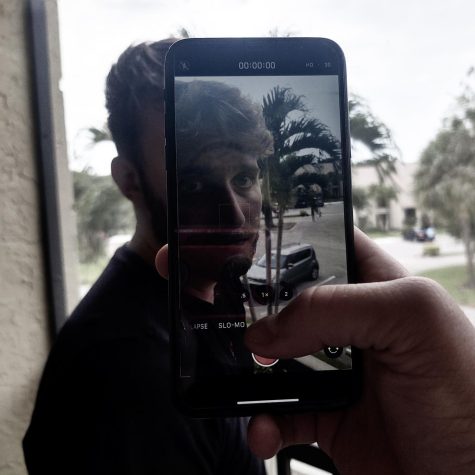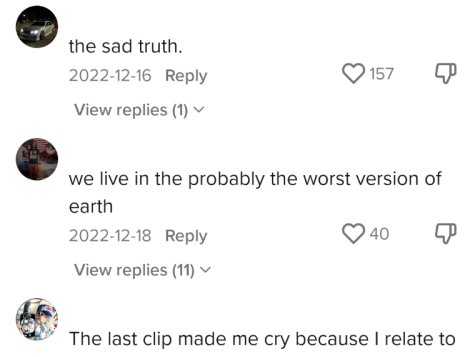Tik Tok trend may explain what comes after postmodernism
January 29, 2023
Throughout history, the form and function of our society have been heavily influenced by movements in philosophy. The art, architecture, academics and culture around us may be ubiquitous to many because we live in it.
The Merriam-Webster dictionary defines modernism as “a self-conscious break with the past and a search for new forms of expression.” After World War I, this came in the form of reformations in the fields of architecture, art and institutions that moved towards efficiency and the stripping of unnecessary aesthetic elements or rituals in favor of the most efficient and streamlined functions and forms. New technology and economic shifts towards a manufacturing economy allowed for the widespread adoption of modernism across all facets of life.
Encyclopedia Britannica defines postmodernism as “a late 20th-century movement in philosophy and literary theory that generally questions the basic assumptions of Western philosophy in the modern period.” Most adults alive now have spent their lives in this wave of art, philosophy, media and architecture. It was largely defined by a critique and withdrawal from the modern form as well as the addition of unnecessary elements in favor of its aesthetic appreciation. This was also enabled by new communications technology and economic shifts towards a service economy in the U.S.
While academics don’t agree about the end of postmodern movement, several sources define its ending as coinciding with the attacks on September 11th, and correlate the end of postmodern optimism in the culture with the psychological shift in the American public that would follow. This shift was followed by the period Gen Z was born and the age of digital global communication they would come into adolescence within.

The generally accepted term for what comes after postmodernism is “metamodernism.” While the definition is debated among institutions and scholars, a generic definition established by MetaModerna is “the philosophy and view of life that corresponds to the digitized, postindustrial, global age.”
The website WhatIsMetaModern.Com calls out the films “Inside” by Bo Burnham and “Everything Everywhere All at Once” by A24 as explicitly metamodern productions. Both saw success among Gen Z audiences, and expressed similar ideas.
“Inside” highlighted how integrated most people are with the internet, especially at the peak of the COVID-19 pandemic. It offered a critique of online media and rhetoric around late-stage capitalism, or what is perceived by online communities to be indicative of the failures of capitalism. The film was centered around the creator undergoing mental health crises while trying to ethically approach online content creation, and how Bo’s perceived state of the world was leading him into a dissociative state with access to the entirety of human knowledge online while also grappling with issues like climate change and income inequality.
“Everything Everywhere All at Once” was a multiverse film which explored a mother trying to save her daughter from “The Everything Bagel,” which was everything in existence being placed onto one bagel which created a black hole that consumes everything around it. The movie’s creators stated that this was a metaphor for social media and the internet at large. In a world where everything is possible and happening all at the same time, it becomes difficult to not hold a nihilistic viewpoint, especially when many younger people feel they cannot escape from it.
A new viral Tik Tok tag has emerged that shares similar sentiments. Known as “Core Core,” these videos are compilations of other Tik Toks, scenes from movies, and news articles that encompass a sense of hopelessness in the metamodern world that stems from a sense of alienation and media overconsumption.
there is a new genre of videos on tiktok called corecore & they’re such an incredible vibe. pic.twitter.com/Q0sx3vn2aF
— noisé (@proetrie) January 19, 2023
They often feature images of the homeless, the Great Pacific Garbage Patch, and scenes of people struggling with their mental health juxtaposed over influencers, gurus offering financial advice, and product reviews.

This format and category of video reflects larger viewpoints of a generation who doesn’t share the same optimism as many of their older peers, and could be defined as expressing metamodern sentiments.
According to ExplodingTopics.com, a statistic aggregation site, 64% of Gen Z uses Instagram more than once a day; they are more likely to seek mental health help than any other generation; climate change is their greatest fear; and 61% of them regularly feel nervous, anxious and on edge. The McKinsey Health Institute reports that nearly half of Gen Z reports a high level of distress due to climate change and COVID-19. Newsweek reported that the majority of the generation holds negative views towards capitalism.

The general sentiment of metamodern media appears to not favor new forms of global digital communication positively. ‘Inside” and “Everything Everywhere All At Once” express an urgency with what seems to be the limits of human ingenuity with all of society being collapsed into a one-dimensional digital space. This is accompanied by a larger alienation with the world as a whole affected by the inability to affect change experienced by Gen Z. Nihilistic outlooks on changing a global economic system seen as unjust by the generation combined with anxiety about the ability for humanity to overcome climate change and the limitations of social media to offer a realistic sense of intimacy in communication define the genre of metamodernism and Core Core.
Many comments on these videos repeat these sentiments. “I’m so tired,” “Everything is so loud,” and statements about feeling nothing in response to arguably emotional content are ample on Core Core videos.

While we can’t define what metamodern will become or what it is, similar to the old Chinese proverb “If you want to know about water, don’t ask a fish,” it’s hard to see all around us because we live in it. The movement may evolve past Core Core and bleed into other aspects of society, however how we interact with the new metamodern world is up to us.
Sometimes I just look at core core on tik tok to feel something
— CIA (@CynthiaAlonzo2) January 28, 2023
A trend on Tik Tok has emerged in opposition to the sentiment known as “the indomitable human spirit.” While also sharing similar metamodern aspects, it acknowledges the more depressing elements of the changing world while expressing that people could still find a way to be happy within it without contributing to the problem.
The future is determined by present action, and Gen Z doesn’t have to accept inevitability as the only ability.
